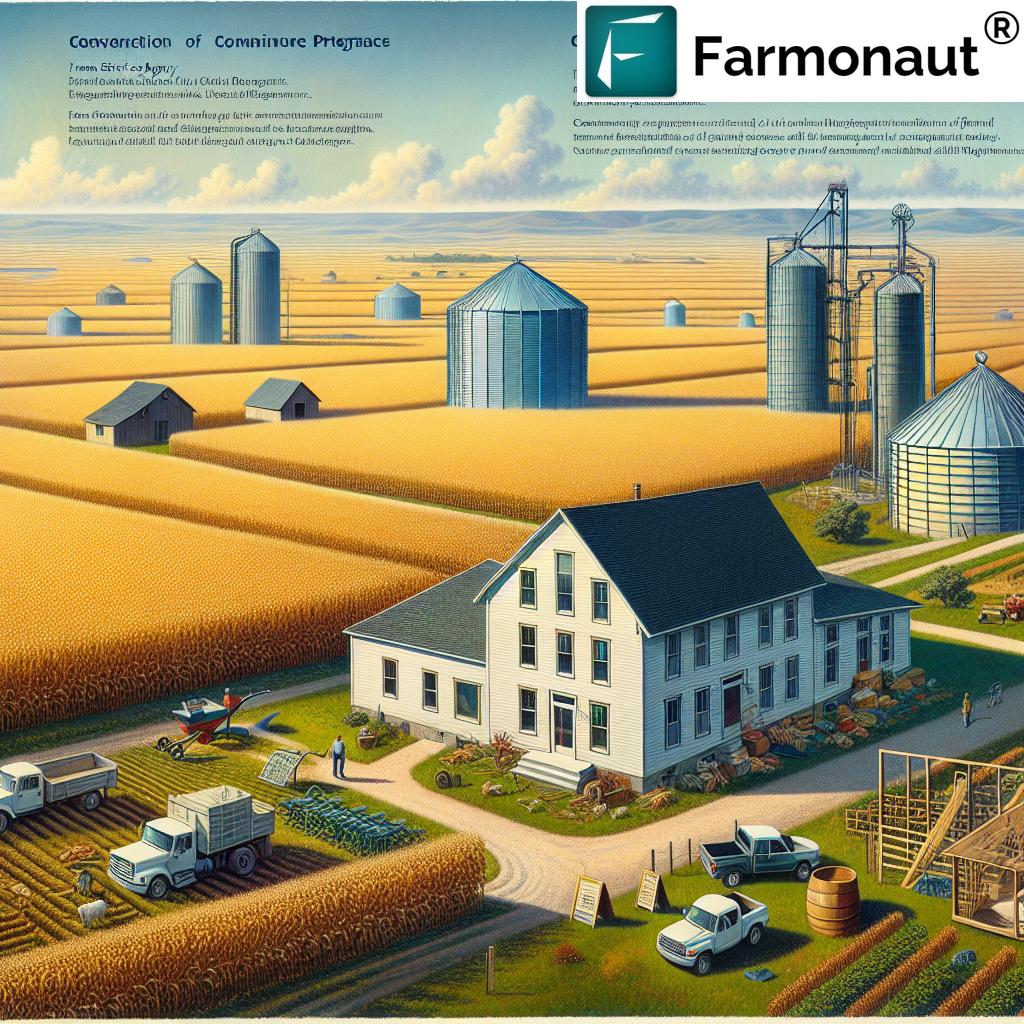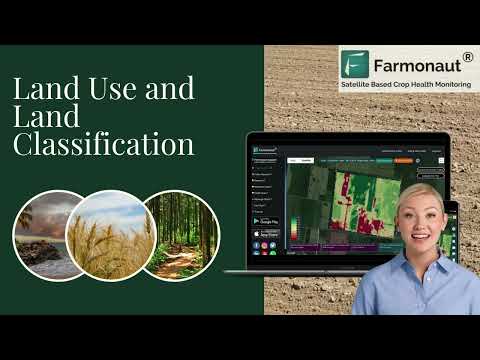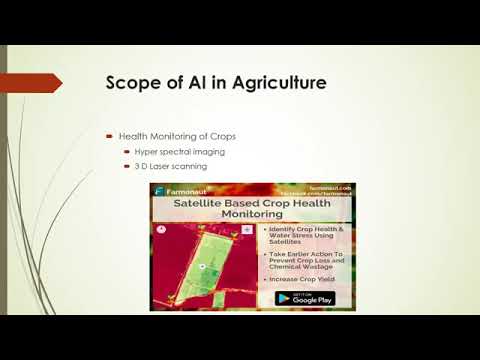USDA Transformation: How Federal Agriculture Programs in Iowa Are Adapting to New Leadership

“USDA’s recent policy changes affect over 85,000 farms in Iowa, impacting rural development and disaster relief programs.”
In the heart of America’s heartland, a significant transformation is underway. The United States Department of Agriculture (USDA) programs in Iowa are experiencing a profound shift under new leadership, reshaping the landscape of federal support for farmers and rural communities. As we delve into these changes, it’s crucial to understand their far-reaching implications for the agricultural sector and the communities it sustains.
The Changing Face of Federal Agriculture Programs
The recent administrative changes in the USDA have sent ripples through the farming community in Iowa and beyond. We’ve witnessed a dramatic overhaul of long-standing policies and procedures, prompting both concern and curiosity among stakeholders. These shifts are not merely superficial; they represent a fundamental reimagining of how the federal government interacts with and supports the agricultural sector.
At the core of these changes is a new approach to program management and resource allocation. The Trump administration’s return to the White House has ushered in a era of significant restructuring within the USDA. This restructuring aims to streamline operations, reduce bureaucracy, and, as stated by the administration, “end waste, fraud, and abuse” within the department.
Impact on Iowa’s Agricultural Landscape
Iowa, with its rich agricultural heritage, stands at the forefront of these changes. The state’s farmers and rural communities are now navigating a new reality of federal support and oversight. Key areas affected include:
- Farm Service Agency Support: The reorganization has led to changes in how the Farm Service Agency operates, potentially affecting the accessibility and delivery of critical support services to farmers.
- Agricultural Disaster Relief: New policies are reshaping how disaster relief is administered, a crucial concern for farmers facing unpredictable weather patterns and natural disasters.
- Conservation Programs: The approach to conservation initiatives is evolving, with potential implications for environmental stewardship and sustainable farming practices.
- Rural Community Development: Changes in rural development programs could significantly impact the economic vitality of Iowa’s small towns and farming communities.
As we explore these changes, it’s important to consider how technological advancements in agriculture can help farmers adapt to this new landscape. Platforms like Farmonaut, which offer satellite-based farm management solutions, can provide valuable tools for farmers navigating these changes.
The Bird Flu Response: A Case Study in Adaptation
The recent bird flu outbreak in Iowa serves as a prime example of how these administrative changes are playing out in real-time. Initially, the USDA’s response was hampered by the broad-scale reduction in workforce. However, the administration quickly reversed course on some firings to ensure an adequate response to the outbreak.
This situation highlights the delicate balance between streamlining government operations and maintaining essential services. It also underscores the importance of maintaining a robust and flexible agricultural support system capable of responding to emergencies.
Accessibility and Accountability: Twin Pillars of USDA Programs
Two core principles have traditionally guided the USDA’s work: accessibility and accountability. These principles ensure that eligible farmers can access the programs they need while also safeguarding taxpayer dollars against misuse. The recent changes have raised questions about how these principles will be upheld under the new administration.
Accessibility Initiatives: The USDA is reimagining how farmers access its programs. This includes:
- Streamlining application processes
- Enhancing digital platforms for program enrollment
- Increasing outreach efforts to underserved farming communities
Accountability Measures: New accountability protocols are being implemented to ensure program integrity:
- Enhanced audit procedures
- Improved data tracking and analysis
- Stricter enforcement of program guidelines
These changes aim to create a more efficient and transparent system. However, concerns remain about whether they will enhance or hinder farmers’ ability to access crucial support.
The Role of Technology in Adapting to Change
As federal agriculture programs evolve, technology plays an increasingly vital role in helping farmers adapt. Advanced agricultural technologies can provide farmers with the tools they need to navigate these changes effectively. For instance, Farmonaut’s satellite-based crop health monitoring and AI advisory systems can help farmers make informed decisions about resource management and crop planning, even as federal support structures shift.
“The USDA administers approximately $20 billion annually in farm support programs, now undergoing significant restructuring under new leadership.”
Federal Farm Loan Programs: A Shifting Landscape
One of the most critical areas affected by the USDA transformation is the federal farm loan program. These loans are lifelines for many farmers, especially in times of economic uncertainty or natural disasters. The new administration’s approach to these programs includes:
- Reevaluating loan eligibility criteria
- Adjusting interest rates and repayment terms
- Introducing new types of loans to address emerging agricultural needs
While these changes aim to improve the efficiency and effectiveness of farm loans, they also create a period of adjustment for farmers who rely on these financial instruments. It’s crucial for farmers to stay informed about these changes and understand how they might affect their access to capital.
Conservation Programs: Balancing Production and Sustainability
Conservation programs have long been a cornerstone of USDA policy, promoting sustainable farming practices while protecting natural resources. The new administration’s approach to these programs reflects a shift in priorities:
- Reevaluating the balance between conservation and production
- Adjusting funding allocations for various conservation initiatives
- Introducing new technologies to enhance conservation efforts
These changes present both challenges and opportunities for Iowa farmers. While some may find new avenues for implementing sustainable practices, others may need to adapt their current conservation strategies to align with new program requirements.
In this evolving landscape, tools like Farmonaut’s satellite-based monitoring can play a crucial role in helping farmers implement and track conservation efforts efficiently. By providing real-time data on crop health and soil conditions, such technologies enable farmers to make informed decisions that balance productivity with environmental stewardship.
Rural Community Development: Reimagining Support for Iowa’s Small Towns
The transformation of USDA programs extends beyond farm-specific initiatives to encompass broader rural community development efforts. These changes have significant implications for Iowa’s small towns and rural areas, which often rely heavily on federal support for infrastructure, economic development, and essential services.
Key aspects of the new approach to rural community development include:
- Prioritizing projects that promote economic self-sufficiency
- Encouraging public-private partnerships in rural development initiatives
- Emphasizing technological innovation as a driver of rural growth
For Iowa’s rural communities, these shifts may require a reevaluation of development strategies and a more proactive approach to securing federal support. Community leaders will need to align their projects with the new priorities to ensure continued access to crucial funding and resources.
The Impact on Family Farms and Commodity Programs
Family farms, the backbone of Iowa’s agricultural sector, are particularly affected by the USDA’s transformation. The changes in commodity programs, which provide crucial price supports and risk management tools, are of particular concern. The new administration’s approach includes:
- Revising price support mechanisms for key commodities
- Adjusting crop insurance programs
- Reevaluating trade policies that affect commodity markets
These changes can have profound effects on the financial stability of family farms. Farmers may need to reassess their crop choices, risk management strategies, and overall business models in light of these new policies.
In navigating these changes, farmers can benefit from advanced agricultural technologies. For instance, Farmonaut’s AI-driven advisory system can provide valuable insights into market trends and optimal crop management strategies, helping farmers make informed decisions in a changing policy landscape.
Comparative Analysis: USDA Program Changes
| Program/Initiative | Previous Approach | New Approach |
|---|---|---|
| Farm Service Agency Support | Broad-based support with extensive staffing | Streamlined operations with reduced workforce |
| Agricultural Disaster Relief | Reactive, case-by-case assessment | Proactive, technology-driven risk assessment |
| Federal Farm Loan Programs | Traditional loan structures with standard criteria | Diversified loan options with revised eligibility criteria |
| Conservation Initiatives | Focus on land retirement programs | Emphasis on working lands conservation |
| Rural Community Development | Broad federal funding for various projects | Targeted support for economic self-sufficiency initiatives |
| Accountability Measures | Standard auditing and reporting procedures | Enhanced data analytics and stricter enforcement |
| Accessibility Initiatives | Primarily in-person services and paper-based applications | Digital-first approach with enhanced online platforms |
| Commodity Programs | Stable price support mechanisms | Revised support structures with market-oriented adjustments |
Challenges and Opportunities in the New USDA Landscape
The transformation of USDA programs presents both challenges and opportunities for Iowa’s agricultural community. Some of the key challenges include:
- Adapting to new program requirements and eligibility criteria
- Navigating reduced in-person support due to workforce reductions
- Adjusting to potential changes in funding availability for certain programs
However, these changes also create opportunities:
- Increased emphasis on technology-driven farming practices
- Potential for more flexible and diverse support programs
- Opportunities for innovation in sustainable agriculture and rural development
To capitalize on these opportunities, farmers and rural communities may need to embrace new technologies and approaches. Tools like Farmonaut’s satellite-based farm management solutions can play a crucial role in helping farmers adapt to this new landscape, providing valuable data and insights to inform decision-making.
The Role of State and Local Agencies in the Transition
As federal agriculture programs undergo transformation, state and local agencies in Iowa play a crucial role in bridging gaps and ensuring continuity of support for farmers. These agencies are adapting their own programs and services to complement and sometimes supplement changing federal initiatives.
Key areas where state and local agencies are stepping up include:
- Providing additional resources for farm loan programs
- Enhancing local disaster response capabilities
- Developing state-specific conservation initiatives
- Offering targeted support for rural community development
This collaborative approach between federal, state, and local agencies is essential for ensuring that Iowa’s agricultural sector remains robust and resilient in the face of changing federal policies.
Looking Ahead: The Future of Federal Agriculture Programs in Iowa
As we look to the future, it’s clear that the transformation of USDA programs will continue to shape Iowa’s agricultural landscape. While the full impact of these changes is still unfolding, several trends are likely to emerge:
- Increased integration of technology in program delivery and farm management
- Greater emphasis on market-oriented approaches to agricultural support
- Continued focus on balancing productivity with environmental sustainability
- More targeted and data-driven approaches to rural development
For Iowa’s farmers and rural communities to thrive in this new landscape, adaptation and innovation will be key. Embracing new technologies, staying informed about policy changes, and actively engaging with both federal and state support systems will be crucial strategies for success.
As we navigate these changes, tools like Farmonaut’s satellite-based farm management solutions can provide valuable support. By offering real-time data and AI-driven insights, such technologies can help farmers make informed decisions and adapt more effectively to the evolving agricultural policy landscape.
Conclusion: Adapting to Change in Iowa’s Agricultural Sector
The transformation of USDA programs under new leadership represents a significant shift in the federal government’s approach to supporting agriculture and rural communities in Iowa. While these changes present challenges, they also offer opportunities for innovation and growth.
Key takeaways for Iowa’s agricultural community include:
- Stay informed about changes in federal programs and policies
- Embrace technological solutions to enhance farm management and decision-making
- Engage actively with state and local agencies to access additional support
- Be prepared to adapt farming practices and business strategies in response to policy shifts
- Look for opportunities to innovate in areas like sustainable agriculture and rural development
By staying adaptable, leveraging available resources, and embracing new technologies, Iowa’s farmers and rural communities can navigate this period of change successfully. The future of agriculture in Iowa will be shaped by how effectively we respond to these transformations, balancing tradition with innovation to ensure a thriving and sustainable agricultural sector for generations to come.

FAQs: USDA Transformation and Iowa Agriculture
- How will the USDA workforce reductions affect service delivery in Iowa?
The reductions may lead to longer processing times for some services, but efforts are being made to streamline processes and enhance digital platforms to maintain efficiency. - What changes can Iowa farmers expect in federal farm loan programs?
Farmers may see revised eligibility criteria, adjusted interest rates, and potentially new types of loans tailored to emerging agricultural needs. - How are conservation programs being affected by the USDA transformation?
There’s a shift towards working lands conservation, with potential changes in funding allocations and program priorities. - What role will technology play in the new USDA landscape?
Technology is expected to play a larger role in program delivery, farm management, and data-driven decision-making processes. - How can Iowa’s rural communities adapt to changes in development programs?
Communities should focus on projects that promote economic self-sufficiency and explore public-private partnerships for development initiatives.
Earn With Farmonaut: Affiliate Program
Earn 20% recurring commission with Farmonaut’s affiliate program by sharing your promo code and helping farmers save 10%. Onboard 10 Elite farmers monthly to earn a minimum of $148,000 annually—start now and grow your income!
Farmonaut Subscriptions
As we navigate these transformative times in Iowa’s agricultural landscape, staying informed and leveraging the right tools will be crucial. Farmonaut’s advanced satellite-based solutions offer valuable support for farmers adapting to these changes. Explore our API and API Developer Docs to see how our technology can help you thrive in this new era of agriculture.







